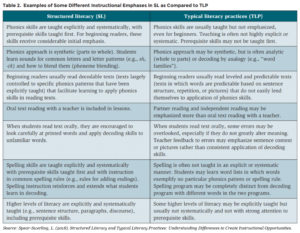What Is Dyslexia?
For decades, October has been recognized as Dyslexia Awareness Month worldwide. 1 in 5 students struggles with dyslexia. Dyslexia is the #1 often misunderstood, hidden learning disability. In fact, many famous people struggle with dyslexia, and you wouldn’t even know it!
According to The International Dyslexia Association (IDA), “Dyslexia is a specific learning disability that is neurobiological in origin. It is characterized by difficulties with accurate and/or fluent word recognition and by poor spelling and decoding abilities. These difficulties typically result from a deficit in the phonological component of language that is often unexpected in relation to other cognitive abilities and the provision of effective classroom instruction. Secondary consequences may include problems in reading comprehension and reduced reading experience that can impede growth of vocabulary and background knowledge.”
What Works for Students with Characteristics of Dyslexia?
Up to 20% of all students have some characteristics of dyslexia and often face negative outcomes because of their inability to read. Administrators and teachers everywhere are more active in providing appropriate teacher professional development and shaping literacy instruction based in the Science of Reading.
Significant progress has been made by researchers in understanding the Science of Reading and how students best learn to read. This research has proven that approaches such as Orton-Gillingham, initially created for those with dyslexia, are helpful for all readers.
Orton-Gillingham was the first approach to use explicit, direct, sequential, systematic, and multi-modal instruction to teaching reading.
How Dyslexia Redefined the Way We Look at Literacy
The Science of Reading and approaches like Orton-Gillingham are more widely applied through innovative Structured Literacy programs that are proving helpful for all readers and are essential for students with dyslexia. And sufficient evidence exists that evidence-based, scientific approaches to reading that include direct systematic instruction in phonological awareness, phonics, fluency, vocabulary, and comprehension, such as Structured Literacy, work.
However, plenty of evidence suggests that many teachers do not have the knowledge and experience necessary to apply these approaches effectively. Parents and teachers of students who struggle with dyslexia are the most prominent advocates for change in how literacy is taught at the school, district, state, and even legislative levels. Just learn how one Idaho mom “fought like a badger” to create change in her state for students not only struggling with dyslexia but for all students.
Structured Literacy belongs in every K-3 classroom. All children must understand phonics to be able to excel in reading. Roughly 40% of students require direct, explicit instruction in phonics. Reading instruction based in the Science of Reading needs to be in every general education classroom. Many students may not ever have a need for special education when effective reading instruction is provided in every classroom.
The 2000 National Reading Panel’s summary of findings reported that “systematic phonics instruction produces significant benefits for students in kindergarten through 6th grade and for children having difficulty learning to read.”

The IDA supports delivering Structured Literacy not only to students who struggle with dyslexia, but to all students. If K-3 teachers are prepared with the knowledge needed to spot signs of dyslexia among their students, they can address the issue at an early age to prevent issues for those students later in their academic careers.
IMSE Is an IDA-Accredited Program
The International Dyslexia Association awarded IMSE with its IDA Accreditation and Accreditation Plus seals. This means that IMSE is committed to the Knowledge and Practice Standards for Teachers of Reading. This also means “parents and community members can be assured that a child’s reading and language arts instruction are delivered by a professional whose training was directed by an educational program committed to standards-based excellence in Structured Literacy and the Science of Reading.”
Specifically, the IDA awarded IMSE:
- Accreditation status for IMSE Impact courses (Comprehensive OG+ and Morphology+)
- Accreditation Plus status for anyone completing requirements for IMSE Specialist Certification, which means completing both of IMSE’s Practicums
We at IMSE are dedicated to providing teachers with the tools necessary in order to help all students, especially those with dyslexia, learn to read.
Want to learn more about professional development that helps educators support students with dyslexia? Check out information on the IMSE Impact Structured Literacy Professional Development page here.
Resources:
- https://www.dyslexiacenterofutah.org/Statistics#:~:text=70%2D80%25%20of%20people%20with,males%20and%20females%20have%20dyslexia.
- https://dyslexiaida.org/definition-of-dyslexia/
- https://drive.google.com/file/d/1obDteCRWH-u8OTM1k4yhzpsnOVxsRBGn/view
- https://www.sreb.org/resources/dyslexia-policy-changing-landscape
Please connect with us on Facebook, Twitter, Instagram, LinkedIn, and Pinterest to get tips and tricks from your peers and us. Read the IMSE Journal to hear success stories from other schools and districts, and be sure to check out our digital resources for refreshers and tips.
